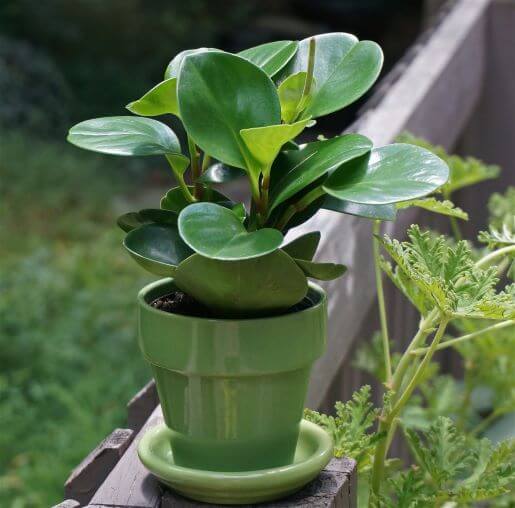Peperomia
Nickname: Radiator Plant
Peperomia may easily be pronounced, but you could get even more overwhelmed with tracking its species. There are more than 1,000 known species, all with thick, fleshy leaves that contribute to their drought toughness and vigor as a houseplant.
Each of the 1000 different kinds of species may look so different from one to the other that it's difficult to understand how they're related, but one thing that they all share is that they are all slow-growing and have extremely low maintenance, making them a perfect houseplant to add to your collection.
How to take care of Peperomia
The peperomia plant is a smart choice for the novice plant parent. Not only are they forgiving plants, they actually tolerate some neglect (ahem, looking at you Snake Plants), but the different variety of colors and textures between species means that you can amass an interesting collection of plants for every style and space, all of which require the same care. Feel free to bunch them up and understand that they all require low maintenance, which is always a joy to plant owners.
Plant these bad boys in a pot with good, effective drainage holes, using an orchid potting mix, then place the plant in bright indirect light. Peperomia plants require little attention: water only when the soil is dry to the touch. Plant food is not necessary most of the time so don't worry about this one.
Peperomia may be subject to the same common pests that can affect most houseplants: mealybugs, spider mites, and whitefly. Insecticidal soap is the best non-toxic treatment for these pests. Leaf spots may occur, and the plants are susceptible to rot if the soil is consistently too moist.
Humidity |
30-60% Basic household humidity (30-40%) is fine though higher humidity encourages larger leaves |
|
Light |
Full Sun |
|
Water |
The peperomia does best when it is watered from its roots. The plant’s soil should be dry before you water the plant again. Therefore, if you are growing it as a houseplant, let it sit in a pan of water for a few minutes every seven to 10 days. It is important, especially during the winter, to not get the crown of this plant wet. At the end of spring, give it one good watering from the top preferably under running water. This helps to remove salts that this plant builds up. |
|
Temperature |
55-75°F |
|
Plant Food |
Provide your radiator plants with medium to full sunlight and occasional watering. A good rule of thumb is to water your plants once the soil has dried out completely (it should feel dry to the touch). They're fairly drought tolerant, and they grow just fine without any interference from fertilizer. |
|
Pests |
Stunted growth, mold under leaves, or small black flies from the soil are signs of pests. Sometimes, reducing watering can be enough to control fungus gnats. |
|
Pet Toxicity |
Non-Toxic |
|
Repotting |
If you find it necessary to repot your peperomia, then remember that this plant would rather have too small a pot than too big a pot. In fact, you probably should not repot the peperomia unless the roots are coming out of your pots drain holes. If you find it necessary to repot your peperomia, then be extremely careful as this plant has delicate roots that can be easily damaged. |
Frequently Asked Questions
Do Peperomia need a lot of sun?
Full Sun
Peperomias love basking in the sun. Go all out!
Are Peperomias toxic to pets?
No
Peperomias are not toxic to both dogs and cats.
What do you do if you overwater?
The best thing to do when you've overwatered a Peperomia is to stop watering and relocate it to a place with a lot of sun so that you can dry out the soil. After that, you probably will want to inspect the roots for root rot and repot the plant.
Do Peperomias like to be misted?
Yes
Peperomias like to be misted, especially throughout the summer to keep the leaves nice and moist.
For other plant guides, check out here Declutterd Plant Guide.
Happy Planting!



